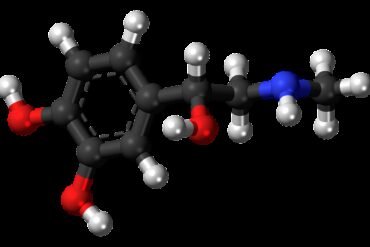Decoding Food Labels: Your Guide to Making Healthy Choices

Table of Contents
Understanding Serving Sizes: Key to Portion Control
When it comes to maintaining a healthy diet, understanding serving sizes is crucial. Portion control plays a significant role in managing weight and ensuring a balanced intake of nutrients. However, deciphering food labels and determining appropriate serving sizes can be a challenge. Here’s a guide to help you navigate through the confusion:
- Read the Nutrition Facts label: The first step in understanding serving sizes is to read the nutrition facts label on the packaging. This label provides information on the serving size, the number of servings per container, and the amount of nutrients in each serving.
- Pay attention to serving size information: Serving sizes are typically listed in familiar measurements such as cups, ounces, or pieces. However, they may not always reflect the amount you usually consume. Compare the serving size mentioned on the label with the portion you typically eat to determine the nutritional content accurately.
- Consider your specific needs: Serving sizes can vary depending on your age, gender, activity level, and dietary requirements. For instance, a serving size for a sedentary adult might differ from that of an athlete. Consult with a healthcare professional or a registered dietitian to determine the appropriate serving sizes for your specific needs.
- Use measuring tools: Measuring cups, spoons, and food scales can help you accurately portion your meals. By measuring your servings, you can better control your calorie intake and avoid overeating.
- Be mindful of portion distortion: Over the years, portion sizes in restaurants and packaged foods have increased significantly. Be aware of portion distortion and train yourself to recognize appropriate serving sizes. It may take time, but with practice, you can develop a good sense of portion control.
- Focus on nutrient density: Instead of solely relying on serving sizes, consider the nutrient density of the food. Opt for nutrient-rich options that provide essential vitamins, minerals, and other beneficial compounds, even if the serving size may be small.
Understanding serving sizes is essential for maintaining a healthy diet and managing your weight. By paying attention to food labels, considering your specific needs, and practicing portion control, you can make informed choices and achieve your health goals.
Unveiling Hidden Sugars: Identifying Sneaky Sweeteners
When it comes to making healthy food choices, understanding food labels is essential. One aspect that often goes unnoticed is the presence of hidden sugars. These sneaky sweeteners can make a seemingly healthy product turn into a sugar-loaded treat. To help you navigate through the confusion, here are some tips to identify and avoid hidden sugars on food labels.
1. Look beyond the obvious names: Sugar can hide behind various names on food labels. Common aliases include high fructose corn syrup, cane juice, maltose, sucrose, and dextrose. Keep an eye out for these terms to spot hidden sugars in your food.
2. Check the ingredient list: Ingredients are listed in descending order by weight. If sugar or its alternatives appear at the top of the list, it indicates a high sugar content. Be cautious when the product contains multiple types of sugar, as it suggests a significant amount of hidden sugars.
3. Watch out for “health” claims: Food manufacturers often use terms like “low fat,” “diet,” or “all-natural” to market their products. However, these claims can be deceiving. Always read the nutrition facts panel and ingredient list to ensure there are no hidden sugars lurking behind these marketing tactics.
4. Be wary of sugar substitutes: While sugar substitutes like stevia, sucralose, and aspartame may seem like healthier alternatives, they can still contribute to a craving for sweet flavors. Moderation is key, as excessive consumption of these substitutes can have negative health effects.
5. Compare similar products: When choosing between similar products, compare their nutrition labels. Look for options with lower sugar content, as even slight differences can make a significant impact on your overall sugar intake.
6. Opt for whole foods: The best way to avoid hidden sugars is by choosing whole, unprocessed foods. Fruits, vegetables, lean proteins, and whole grains have naturally occurring sugars that are accompanied by essential nutrients and fiber.
By being aware of hidden sugars and making conscious choices, you can take control of your sugar intake and make healthier food choices. Reading and understanding food labels is a powerful tool in achieving a balanced and nutritious diet.
Deciphering Ingredient Lists: Spotting Healthy vs. Harmful Additives
When it comes to making healthy food choices, one of the most important skills to have is the ability to decipher ingredient lists. These lists can be confusing, filled with scientific-sounding names and unfamiliar terms. However, with a little knowledge and practice, you can easily spot the difference between healthy and harmful additives. Here are some tips to help you navigate through ingredient lists like a pro:
- Look for whole, real ingredients: The best way to ensure that a food is healthy is to choose products that contain whole, real ingredients. These are foods that you recognize and can pronounce, such as fruits, vegetables, whole grains, and lean proteins.
- Beware of additives with numbers or names you can’t pronounce: If you come across a long list of additives with names you can’t pronounce or numbers such as E320 or E621, it’s a red flag. These are often artificial additives that can be harmful to your health.
- Avoid artificial sweeteners and high-fructose corn syrup: Artificial sweeteners like aspartame, sucralose, and saccharin, as well as high-fructose corn syrup, should be avoided. These additives have been linked to various health problems and are best to be consumed in moderation or avoided altogether.
- Watch out for hidden sugars: Sugar can hide under different names on ingredient lists, such as dextrose, fructose, and maltose. Be mindful of these hidden sugars, as excessive sugar intake can contribute to obesity, diabetes, and other health issues.
- Be cautious of artificial colors and flavors: Artificial colors and flavors are often added to processed foods to make them more visually appealing or to enhance taste. However, these additives can have adverse effects on health and have been linked to allergies, hyperactivity, and other negative reactions.
Remember, the ingredient list is your best tool for determining the quality and nutritional value of a product. By familiarizing yourself with common additives and being mindful of the types of ingredients you choose, you can make informed decisions and prioritize your health when it comes to food choices. So, next time you’re at the grocery store, take a moment to decipher those ingredient lists and choose wisely!
Evaluating Nutritional Claims: Separating Fact from Fiction
When it comes to making healthy food choices, decoding food labels is essential. However, understanding the nutritional claims made on these labels can be a challenge. Many products boast various health benefits, but it is important to separate fact from fiction. Here are some tips for evaluating nutritional claims:
- Look for specific claims backed by scientific evidence. Nutritional claims such as “low in saturated fat” or “good source of fiber” should be supported by research or be in line with established dietary guidelines.
- Beware of vague or non-specific claims. Phrases like “natural” or “healthy” can be misleading as they have no standardized definitions. Always check the ingredient list to determine if the product meets your dietary needs.
- Consider the serving size. Nutritional claims are often based on a specific serving size, which may differ from the amount you consume. Be mindful of portion sizes and adjust the nutritional information accordingly.
- Compare similar products. Don’t rely solely on the claims of one product. Compare different brands to get a better understanding of the nutritional value and make an informed decision.
- Consult reliable sources. If you are unsure about a specific claim or ingredient, consult credible sources such as registered dietitians, nutritionists, or reputable health websites for accurate information.
- Pay attention to the order of ingredients. Ingredients are listed in descending order by weight. If a desired nutrient is listed near the end, it may not be present in significant amounts.
Remember, it is important to consider the overall nutritional profile of a product rather than relying solely on a single claim. Use these tips to evaluate nutritional claims and make informed choices that align with your health goals.
Navigating Food Allergens: Safeguarding Your Health
For individuals with food allergies, reading and understanding food labels is essential to maintaining good health. Food labels provide crucial information about the ingredients used in a product, including potential allergens. By carefully examining food labels, you can make informed choices and avoid substances that may trigger an allergic reaction. Here are some important tips to help you navigate food allergens:
- Familiarize Yourself with Common Allergens: Common food allergens include peanuts, tree nuts, milk, eggs, soy, wheat, fish, and shellfish. These allergens are often listed in bold or highlighted on food labels to draw attention. Take note of these allergens to identify potential risks.
- Check for Allergen Statements: Food labels sometimes include precautionary statements such as “may contain” or “processed in a facility that also handles.” These statements indicate that the product could have come into contact with allergens during manufacturing. It is crucial to take these warnings seriously, especially if you have severe allergies.
- Be Aware of Hidden Allergens: Some allergens may not be obvious or have different names on food labels. For example, milk products can go by various names like whey, casein, or lactose. Educate yourself about the different names and forms of allergens to avoid any potential risks.
- Understand Cross-Contamination: Cross-contamination can occur when allergens are inadvertently transferred from one food to another during processing or preparation. Look for labels that indicate special handling practices to minimize cross-contamination, such as “made in a dedicated facility” or “cleaned between production runs.”
- Consult with Manufacturers: If you have any doubts or concerns about specific food products, contact the manufacturer directly. Many companies have customer service numbers or email addresses listed on their packaging. They can provide additional information regarding allergens and the safety of their products.
By taking the time to understand food labels and being vigilant about potential allergens, you can safeguard your health and avoid allergic reactions. Remember to consult with healthcare professionals or allergists for personalized advice and guidance on managing food allergies. With the right knowledge and awareness, you can make healthier choices and enjoy a safer eating experience.


























